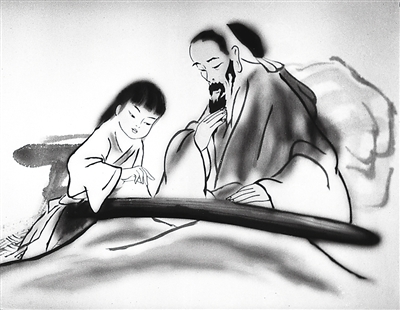(Peoples Daily Online)15:24, August 05, 2019![]()

“Prince Ne Zhas Triumph Against the Dragon King” (Photo provided by JC Cartoon Art Museum)
Chinese animations have adopted traditional cultural elements and attracted global attention thanks to their unique style.
Animators have combined traditional culture with animation since 1956, when Te Wei, then director of Shanghai Animation Film Studio, proposed that domestic animations should integrate national characteristics.
Wan Guchan, a veteran animator, applied the art of paper-cutting to create the cartoon Pigsy Eats Watermelon in 1958, the first of its kind in the country.

Baby Tadpoles Look for Their Mother (Photo provided by JC Cartoon Art Museum)
In 1960, the Shanghai Animation Film Studio introduced ink-wash paintings into its work Baby Tadpoles Look for Their Mother, Chinas first ink-wash cartoon.
The animators created many excellent movies, many of which even won a reputation in the global market. The ink-wash cartoon Feeling from Mountain and Water received five major awards including Best Short Film at the 14th Montreal International Film Festival of Canada in 1990.
Chinas animation industry has developed rapidly since the 1980s as the country furthered cooperation with international cartoon corporations. In 1985, the first Chinese-foreign joint venture that produced cartoons was established in China. Within the following eight or nine years, nearly 100 cartoon enterprises came into being.

Feeling from Mountain and Water (Photo provided by JC Cartoon Art Museum)
The booming industry stimulated the production of cartoons. In 2010, 220,000 minutes of animation were produced, making China the worlds biggest producer of TV cartoons.
In recent years, China has held cartoon exhibitions around the world to bring domestic works to the global market. This year, the country exhibited more than 130 animated cartoons in Japan to showcase the progress of Chinas animation industry.
